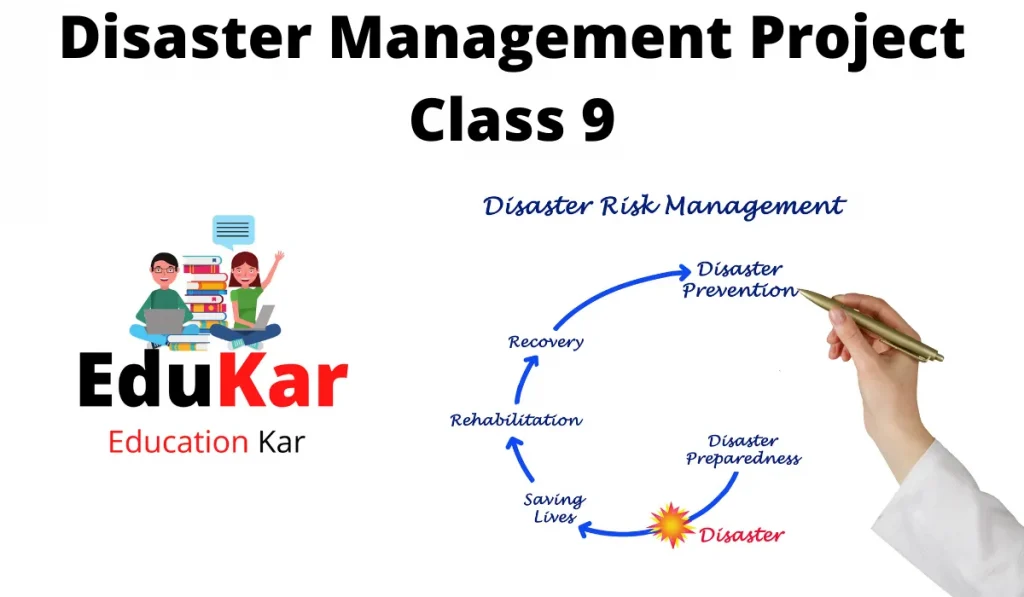Contents
- 1 What is disaster management?
- 2 Why do we learn disaster management?
- 3 What are the most common disaster management scenarios?
- 4 What are the steps of disaster management?
- 5 What are the different types of disasters?
- 6 What are the different levels of disaster management?
- 7 What are some of the benefits of disaster management?
- 8 What are the risks of disaster management?
- 9 What are some steps you can take to be prepared?
- 10 What are some skills you should learn to prepare for a disaster?
- 11 What are some of the disasters that have recently happened?
Throughout history, the world has seen numerous disasters. From climate change to war to natural disasters, these forces have been wreaking havoc on the world. A disaster is something that interrupts everyday life, and takes place without warning. Operating with a disaster management plan in place is the best way to prepare for disaster emergencies. In this blog, we will look into how you can create a disaster management Project for Class 9 plan that is successful.
What is disaster management?
Disaster management is the process of managing the effects of a disaster or unexpected event in order to minimize its impact. It is often the response to natural disasters such as floods, earthquakes, or volcanic eruptions, but it also includes man-made disasters such as terrorist attacks, industrial accidents or nuclear accidents.

Why do we learn disaster management?
There are many reasons that people learn disaster management. Some people learn disaster management because they plan on a career in the field, and others do so because they want to know how to react in the event that a disaster does strike. Some people know that they need to learn disaster management to be prepared for a disaster, and want to be an asset to their family in the event that their plans change.
When a disaster strikes, you will need to know how to help these people. For example, you will need to be able to communicate with them, provide them with food, water and shelter and keep them safe. You will also need to know how to prepare for a natural disaster and save yourself and your family in case of an emergency.
What are the most common disaster management scenarios?
Disasters come in a variety of shapes and sizes. Generally, they are defined as being either a natural or man-made event that results in the loss of human life.
There are many classifications of disaster, but the most common disaster management scenarios tend to be natural disasters, such as earthquakes, floods, tornadoes, hurricanes, and tsunamis.
Man-made disasters are usually classified as accidents, such as nuclear accidents, chemical accidents, and terrorist attacks.
What are the steps of disaster management?
There are a number of steps that are followed during a disaster management process. The first step is to make sure that you have a disaster management plan in place before you need it.
- The first step should be to identify the areas where you are vulnerable to a disaster and develop strategies to protect yourself.
- The second step is to train your staff so that they are ready for a disaster.
- The third step is to ensure that you have an emergency plan in place.
- The fourth step is to make sure that you have a clear communication system in place.
- The fifth step is to have an action plan in place. Finally, the sixth step is to make sure that you have a backup plan in place.
What are the different types of disasters?
There are different types of disasters that can impact your life. They are natural disasters, such as floods, earthquakes, landslides, tornadoes, and lightning.
There are also man-made disasters, such as fires, riots, and hurricanes.
There are also disasters that are both natural and man-made, such as wildfires and volcanic eruptions. A disaster can occur anywhere on Earth, and it can happen at any time.
What are the different levels of disaster management?
Disaster management is the practice of trying to prevent or reduce damage, injury, or death resulting from natural or man-made disasters. There are different levels of levels of disaster management. The 4 levels of disaster management are mitigation, preparedness, response, and recovery.
Mitigation is the process of reducing the impact of a disaster by taking preventative measures.
Preparedness is the process of being proactive, taking steps to reduce the impact of a disaster by taking preventative measures.
Response is the process of taking immediate measures to reduce the impact of a disaster.
Recovery is the process of repairing and rebuilding after a disaster.
What are some of the benefits of disaster management?
There are many benefits of disaster management. A disaster management plan can help to ensure that the community is ready for a disaster. It also helps to ensure that your community is safe and secure. It also helps to provide an overall sense of security to your community. The main benefits of disaster management are that it helps to prepare for a disaster and it helps to reduce the damages that a disaster might cause.
What are the risks of disaster management?
When it comes to disaster management, there are a number of risks that come with the job. Some of these risks are physical, while others are more emotional. Some risk factors for disaster management include psychological trauma, high stress, and the risk of high-level disasters.
In many cases, disaster management can be a high-risk profession. Despite the risks, disaster management is a profession that is on the rise. In many ways, disaster management is similar to crime scene investigation. There is always a risk when it comes to working in this industry, but the rewards are well worth the risk.
What are some steps you can take to be prepared?
Preparation can take many forms, from the simple and often forgettable, such as installing smoke alarms in your home, to the more advanced and expensive, such as constructing a flood-safe building or buying an emergency generator. In general, disaster management is the planning and preparation for dealing with the consequences of natural or man-made disasters. Preparation can take many forms, from the simple and often forgettable, such as installing smoke alarms in your home, to the more advanced and expensive, such as constructing a flood-safe building or buying an emergency generator.
What are some skills you should learn to prepare for a disaster?
ealing with an emergency can be stressful. But it doesn’t have to be like that. You can learn these skills now and prepare for the worst that could happen. A lot of people find that they are more capable and confident when they know how to deal with a disaster. Here are some skills you should learn to prepare for a disaster: • Shelter Building: Know how to make your own shelter. Make sure that you know how to use a tarp, tent and a sleeping bag.
• Fire-Building: Know how to control on fire. You should also know how to use fire extinguisher and all other equipment.
• Medicinal Herbs: Know how to make your own herbal remedies. You should know how to identify plants and use them as a source of medicine.
• Wilderness Survival: Know how to build shelter, build a fire, and make a good meal.
• Emergency Preparedness: You should have a basic knowledge of emergency situations to face them.
What are some of the disasters that have recently happened?
In India, one of the most common natural disasters is floods. In the past few years, there have been many floods in India, the most recent being the floods in the state of Tamil Nadu. There are many other natural disasters that have happened in India, including cyclones, earthquakes, tsunamis, and severe storms. The following are some of the disasters that have recently happened in India:
- Assam Earthquake on April 28, 2021.
- Cyclone Gulab: Cyclone Gulab was a storm that impacted eastern India on September 24, 2021, in the Bay of Bengal.
- Maharashtra Floods.
- Tamil Nadu Floods.

![Packing Class 9 Questions and Answers [Class 9 English Beehive Chapter 7 ] Packing Class 9 Questions and Answers [Class 9 English Beehive Chapter 7 ]](https://edukar.in/wp-content/uploads/2023/01/Packing-Class-9-Questions-and-Answers-1024x640.webp)
![Natural Vegetation and Wildlife Class 9 Questions Answers [Class 9 Geography Chapter 5] Natural Vegetation and Wildlife Questions Answers](https://edukar.in/wp-content/uploads/2023/01/Natural-Vegetation-and-Wildlife-Questions-Answers--1024x640.webp)
![Digital Documentation Class 9 [Questions Answers & MCQ] Digital Documentation Class 9](https://edukar.in/wp-content/uploads/2022/08/Digital-Documentation-Class-9-1024x597.webp)
![What is Sublimation with Examples? [Class 9,10th,11th] What is Sublimation with Examples](https://edukar.in/wp-content/uploads/2023/03/What-is-Sublimation-with-Examples.webp)
![No Men Are Foreign Class 9 Question Answer [NCERT] No Men Are Foreign Class 9 Question Answer](https://edukar.in/wp-content/uploads/2023/01/No-Men-Are-Foreign-Class-9-Question-Answer-1024x640.webp)

![Weathering The Storm in Ersama Question Answer [Class 9 English NCERT Solutions] Weathering The Storm in Ersama Question Answer [Class 9 English NCERT Solutions]](https://edukar.in/wp-content/uploads/2023/01/Weathering-The-Storm-in-Ersama-Question-Answer-1024x640.webp)

![No Men Are Foreign Summary [CBSE Class 9] By James Falconer Kirkup No Men Are Foreign Summary](https://edukar.in/wp-content/uploads/2022/10/No-Men-Are-Foreign-Summary--1024x536.webp)
![Weathering The Storm In Ersama Summary [CBSE Class 9] by Harsh Mander Weathering The Storm In Ersama Summary](https://edukar.in/wp-content/uploads/2022/10/Weathering-The-Storm-In-Ersama-Summary-1024x536.webp)



![A House Is Not A Home Question Answer [Class 9 English Moments Chapter 8] A House Is Not A Home Question Answer](https://edukar.in/wp-content/uploads/2023/01/A-House-Is-Not-A-Home-Question-Answer-1024x640.webp)

